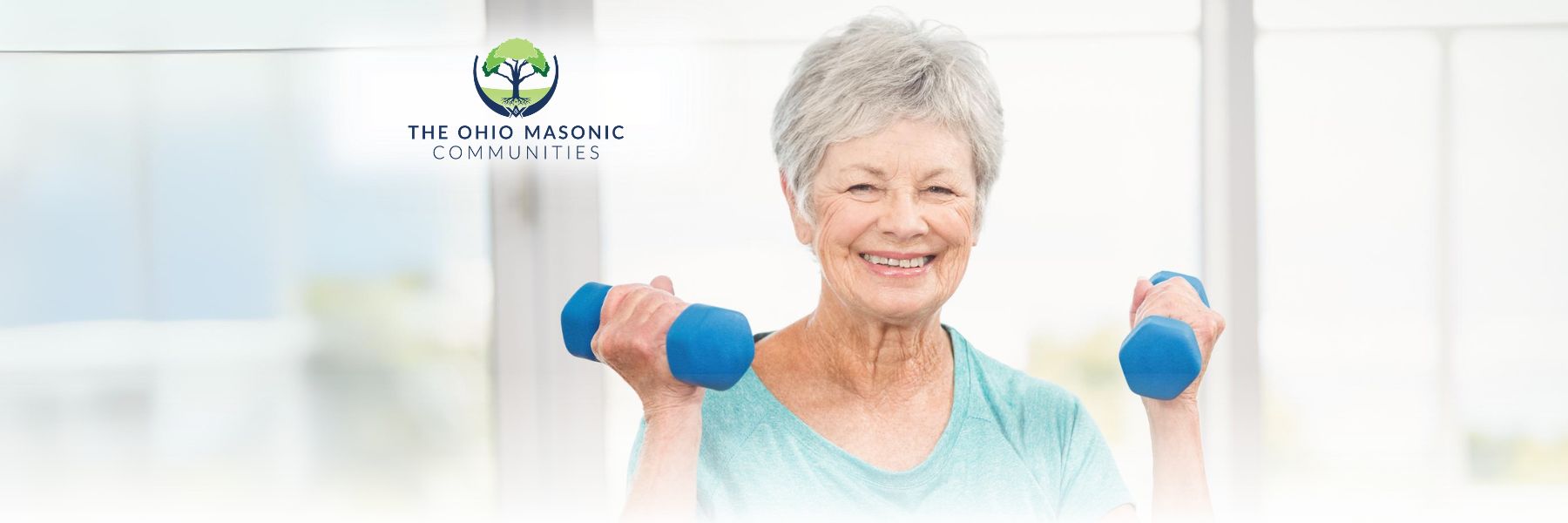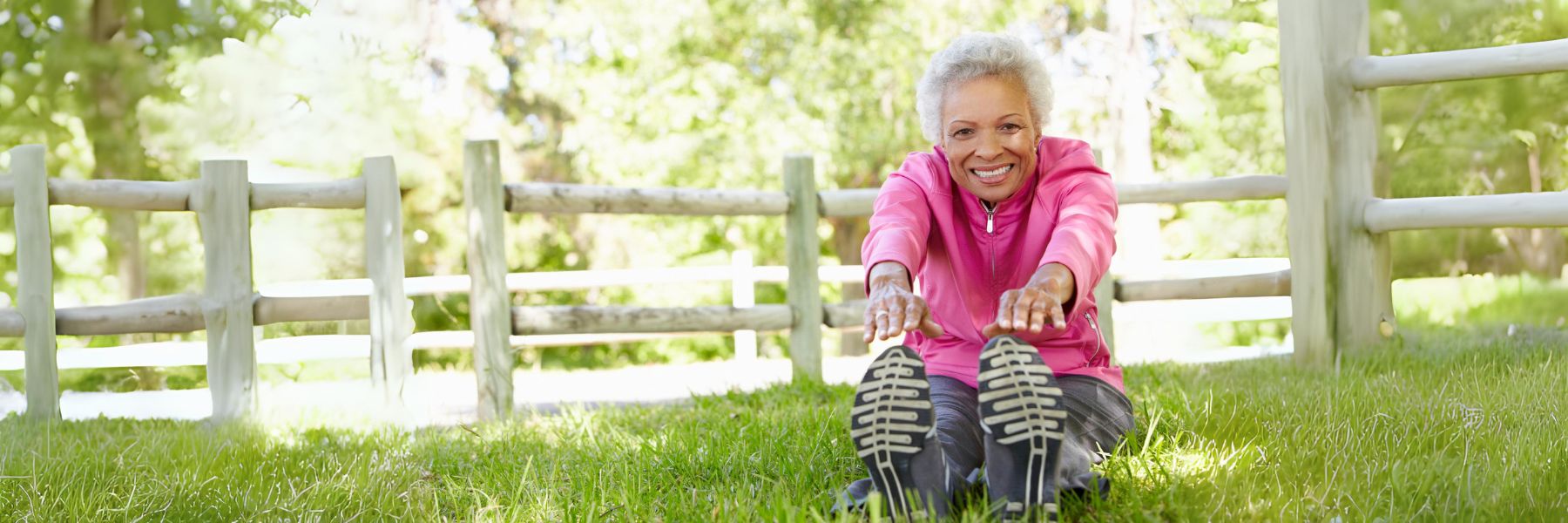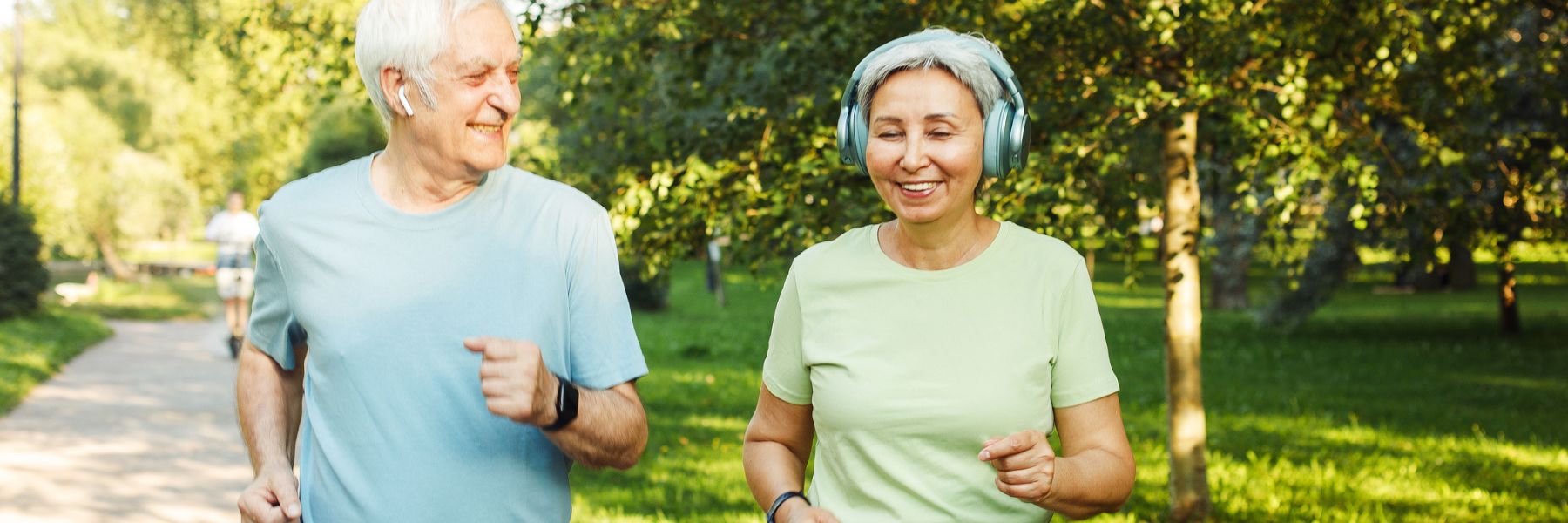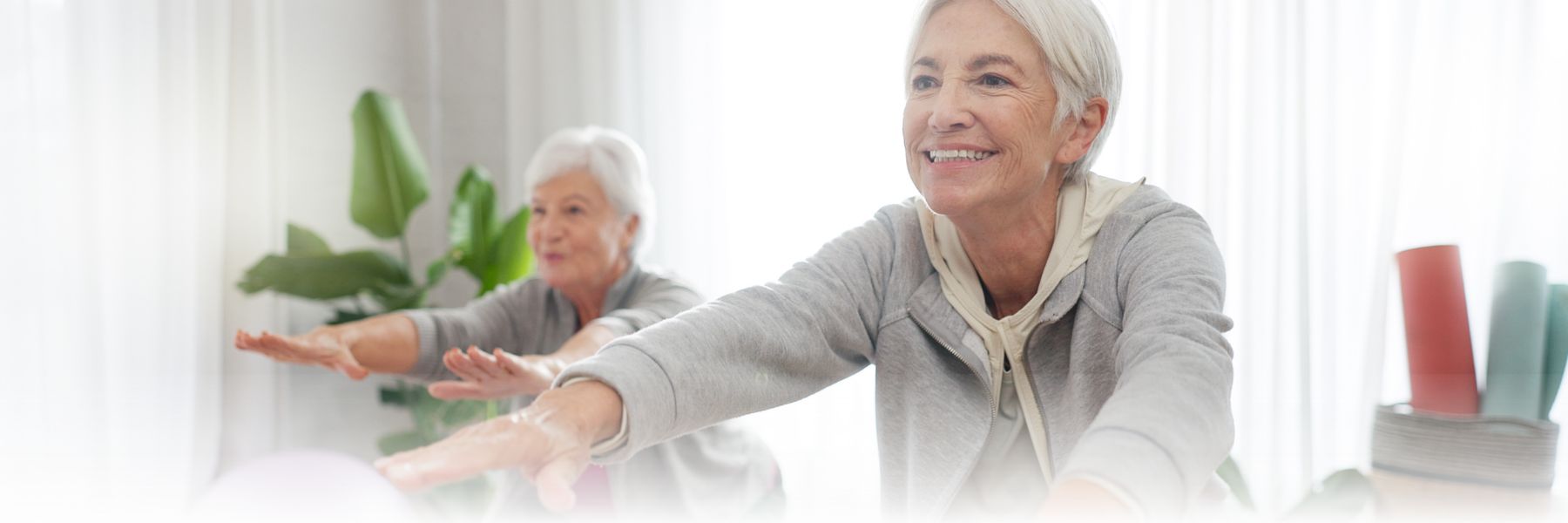
It’s Time to Get Active!
Are there days when you wake up, look at everything that you need to do and wonder how exercising will fit into your day? For your health, it is important to make exercise a priority in your life, regardless of your age.
A recent study found that physical activity was the number one contributor to longevity, adding extra years to your life—even if you don’t start exercising until you’re older. Getting active is not just about adding years to your life, it’s about making these years the best they can possibly be!
Make Exercise Fun: Bring Activities Into Your Routine
If you dread working out, you’re not alone. Think about activities that you enjoy and how you can incorporate them into an exercise routine:
- Listen to music or an audiobook while exercising.
- Window shop while walking laps at the mall.
- Get competitive while playing tennis.
- Take photographs on a nature hike.
- Meet new people at a yoga class or fitness center.
- Watch your favorite movie or TV show while walking on the treadmill.
- Instead of chatting with a friend over coffee, chat while walking, stretching, or exercising.
- Walk the golf course instead of using a cart.
- Walk or play with your dog.
- Go for a run, a walk, or cycling.
- Find an exercise buddy, someone you really enjoy, and try activities you’ve never tried before.
Dispelling the Myths of Exercising as a Senior Adult
As people age, they often become concerned about exercising. Health care professionals look at these worries as “myths” and offer ways to dispel the worries of their patients.
Myth: There’s no point in exercising, I’m going to get old anyway.
Regular physical activity helps you look and feel younger and stay independent longer. It also lowers your risk for a variety of conditions, including Alzheimer’s and dementia, heart disease, diabetes, certain cancers, high blood pressure, and obesity.
Myth: Exercise puts me at risk of falling down.
Regular exercise, by building strength and stamina, prevents loss of bone mass and improves balance, actually reducing your risk of falling.
Myth: I’m too old to start exercising.
You’re never too old to get moving and improve your health. Adults who become active later in life often show greater physical and mental improvements than their younger counterparts. Begin with gentle activities and build up from there.
Myth: I’m too weak and have too many aches and pains.
Getting moving can help you mange pain and improve your strength as well as your self-confidence. Many older adults find that regular activity helps lessen the decline in strength and actually improves it.

Keeping Active is Key
Physical activity is a great way for older adults to gain substantial health benefits and maintain independence. Being active is one of the most important things you can do each day to maintain and improve health. The key to sticking with exercise is to make it interesting and enjoyable. Be creative. Do things you enjoy but pick up the pace.
You are more likely to exercise if it’s a convenient part of your day. Combine physical activity with a task that’s already part of your day, such as walking the dog or doing household chores. If you don’t have 30 minutes to be active, look for three 10-minute periods. As you progress, add more 10-minute sessions until you hit your goal.
The best way to stay motivated is to measure and celebrate your successes:
- Make an exercise and physical activity plan that works for you and track your daily physical activity.
- Find new ways to increase your physical activity.
- Keep track of your monthly progress to see improvement.
- Update your exercise plan as you progress.

The 4 Building Blocks of Fitness
Remember that different types of physical activity help improve your overall health. The key is to find activities that you enjoy—based on the four building blocks of fitness. These are:
Balance
Balance exercises help maintain standing and stability, whether you’re stationary or moving around. It improves your balance, posture, and the quality of your walking. It also reduces your risk of falling.
Cardio
Cardiovascular exercise uses large muscle groups in rhythmic motions over a period of time. It gets your heart pumping and may leave you feeling a little short of breath. Cardio exercise helps lessen fatigue and shortness of breath. It also promotes independence by improving endurance for daily activities.
Strength and Power Training
Strength training builds up muscle with repetitive motion using external resistance from machines, free weights or your own body weight. Strength training helps prevent loss of bone mass, builds muscle, and improves balance. Building strength and power will help you stay independent and make day-to-day activities such as opening a jar, getting in and out of a car, and lifting objects easier.
Flexibility
Flexibility workouts challenge your body’s joints to move freely through a full range of motion. This can be done through stationary stretches or stretches that involve movement. Flexibility helps your body stay limber and increases your range of movement for ordinary physical activities, such as looking behind while driving, tying your shoes, shampooing your hair, or playing with your grandchildren.

Fitness Tips for Older Adults
Every week, senior adults need:
- Aerobic physical activity that includes at least 150 minutes at moderate intensity. This could be 30 minutes a day, 5 days a week.
- At least 2 days of activities that strengthen muscles.
- Activities to improve balance.
If you have trouble meeting these recommendations, be as physically active as your abilities and conditions allow. Remember that some physical activity is better than none at all.
Light activity is moving rather than sitting or lying down.
- getting up to make a cup of tea
- moving around your home
- cleaning and dusting
- walking at a slow pace
- vacuuming
- making the bed
- standing up
Moderate intensity activities
- walking/hiking
- water aerobics
- riding a bike
- dance for fitness
- doubles tennis
- pushing a lawn mower
High intensity activities
- running
- aerobics
- swimming
- riding a bike fast or on hills
- hiking uphill
- dance for fitness
Strengthen muscles
- carrying heavy shopping bags
- yoga
- Pilates
- tai chi
- lifting weights
- working with resistance bands
- exercises that use your body weight
- heavy gardening
Envision a Healthier You
Can you visualize a stronger, healthier you? As you age, exercising regularly is one of the most important things we can do to stay active for longer. If you are someone that has not exercised regularly, consider a conversation with your health care provider to determine the best way to start, advance, and get the most benefit from your exercise program.
If you or a loved one has additional questions about incorporating physical activity into your daily routine, The Ohio Masonic Communities is a great resource. With three senior living communities across the state of Ohio – Browning Masonic Community in Waterville, Ohio, Springfield Masonic Community in Springfield, Ohio, and Western Reserve Masonic Community in Medina, Ohio – each offers premier living options with exceptional experiences so residents can live their best lives. If you are interested in learning more about one of our communities, give us a call at 1-877-881-1623. We will be happy to answer all your questions and be a trusted resource in the search for the right community for you!